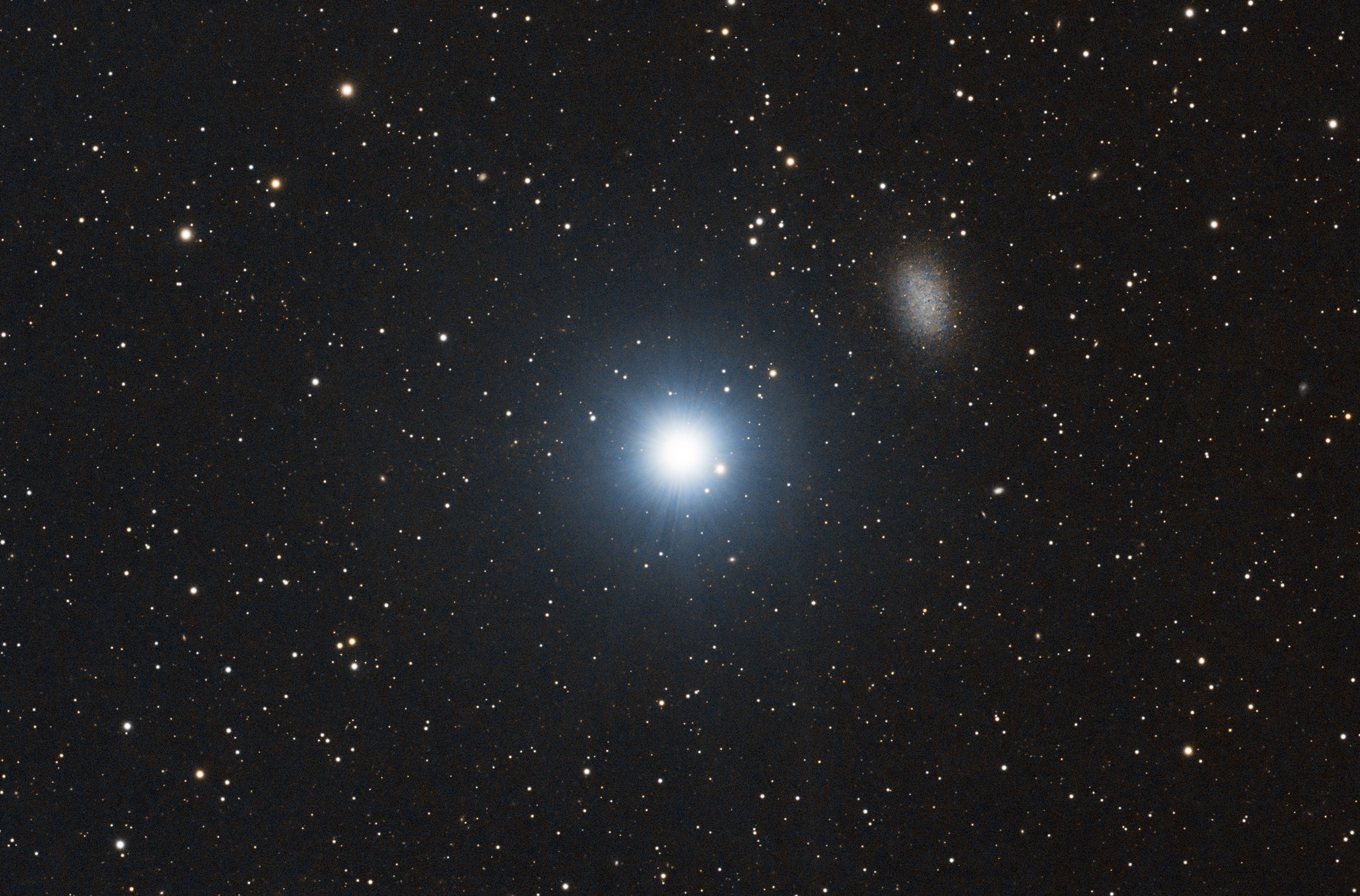
AAPOD2 Image Archives
Alessandro Cipolat Bares
Featured Astrophotographer on AAPOD2
Regulus and Leo1
Regulus, the brightest star in the constellation Leo, reigns as a beacon of celestial brilliance amidst the cosmic tapestry of the night sky. Situated approximately 79 light-years away from Earth, this blue-white giant star captivates observers with its luminous presence and regal splendor.
As the heart of the celestial lion, Regulus holds a prominent position in the mythology and cultural lore of many civilizations. Its name, derived from the Latin word for "little king," underscores its significance as a royal star in the celestial kingdom. In ancient times, Regulus marked the beginning of the zodiacal sign Leo, symbolizing strength, courage, and leadership.
Accompanying Regulus in its celestial domain is Leo I, a dwarf spheroidal galaxy located about 820,000 light-years away from Earth. This satellite galaxy, discovered in 1950, orbits the Milky Way within the gravitational embrace of the Leo constellation. Despite its modest size and luminosity, Leo I offers astronomers valuable insights into the dynamics of galaxy formation and the distribution of dark matter within the universe.
Together, Regulus and Leo I stand as celestial companions, illuminating the cosmic landscape with their beauty and majesty. Whether observed with the naked eye or through the lens of a telescope, these celestial entities inspire wonder and awe at the grandeur of the universe and the mysteries that lie beyond.
Hull nebula (aka NGC 3372)
The Hull nebula is cataloged under the reference NGC 3372, it covers approximately three degrees of the sky at the distance of 8800 years light, what corresponds to a diameter of 460 years light.
It can be observed in the bare eye.



